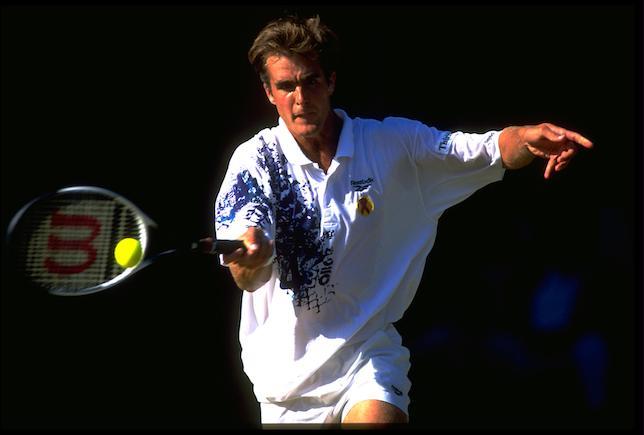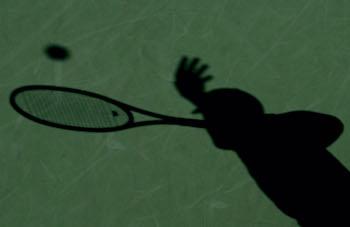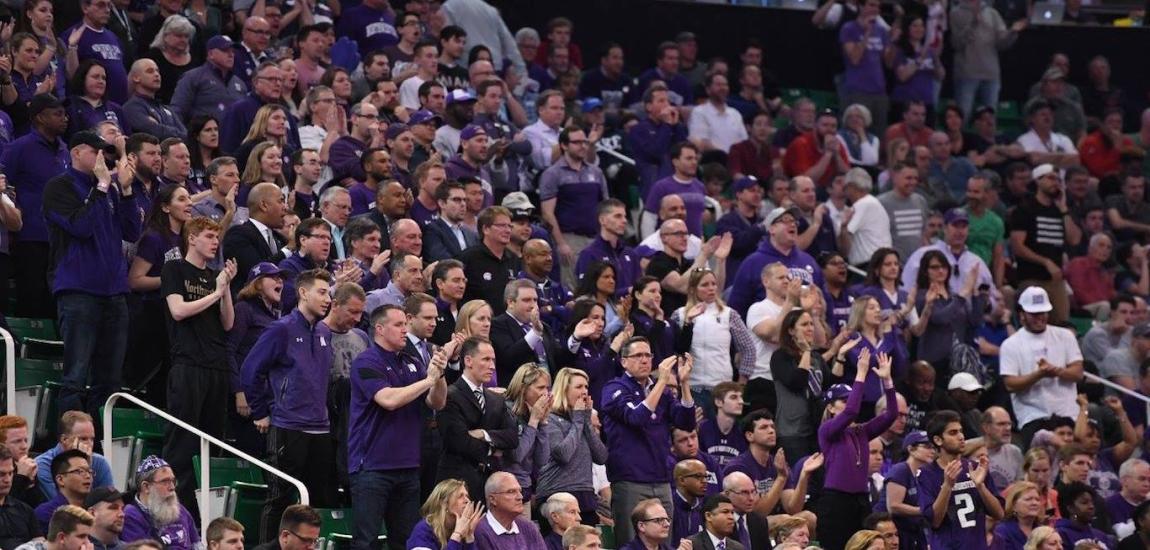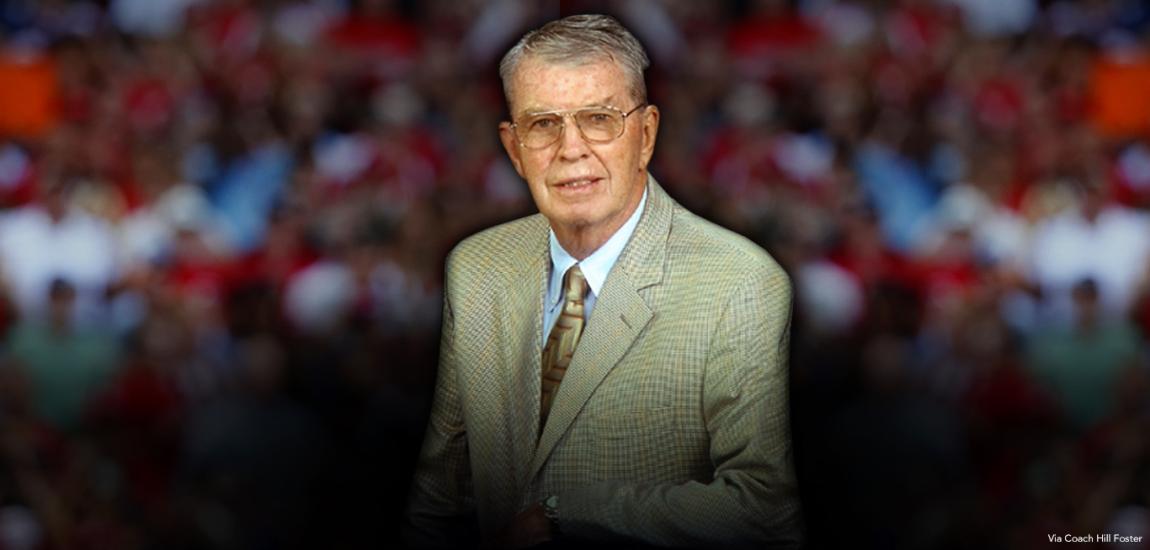You might not know it by looking at us, but here at ThePostGame, we have a special appreciation for college tennis. Rick Schwartz, our executive producer, played at UCLA. Sam Lieber, our CTO, was a two-time team MVP at Delaware. And me, your faithful correspondent? I published a gargantuan headline of "Champs!" in The Daily Northwestern as if it were the back page of a New York tabloid, thanks to a Big Ten tennis title.
The star of the team was Todd Martin. He was a sophomore that year, and he turned pro soon after. His first Grand Slam tournament was the 1991 French Open, and as he advanced, eventually to the fourth round, I tracked him down by phone in his hotel room.

It was only after we talked tennis that Todd kindly reminded me of how significant the time difference is between Paris and Evanston. Oops!
Martin went on to enjoy a 15-year career that included two Grand Slam finals, and he peaked in the world rankings at No. 4. He became CEO of the International Tennis Hall of Fame in 2014, and as part of his job, he keeps a close eye on changes to the collegiate landscape.
One notable development in recent years is the increasing number of Top 100 professional players who competed in college. It is a trend that gained more steam in 2019, and continues in 2020, with former NCAA champion Marcos Giron of UCLA making a breakthrough with his first appearance in the Australian Open.

"The most important thing is that the coaching at the collegiate level continues to improve," Martin says. "You turn back the clock 40 years, and that's just not what college tennis was about. There were a few programs that were really good at converting the best junior tennis players into professional tennis players. Now the collegiate landscape is about development, in some ways, more than it's about academics, and I don't know if that's necessarily good.
"But we're looking at an investment from Oracle here that will increase the number of entry-level professional tournaments, and many of those will end up being hosted on college campuses, so that the players on the team have an opportunity to pursue professional tennis as amateurs. When I was in school, that would have been unheard of."
Danielle Collins, NCAA champion from Virginia in 2014 and 2016, is among the prominent examples of rising stars who had opted for the college route. In 2019, Collins reached the Australian Open semifinals and cracked the Top 25 rankings for the first time.

"If you study the average age of top 100 players, it's actually counterintuitive to what some people think," says Timothy Russell, CEO of the Intercollegiate Tennis Association. "It's actually getting older. The average age of Top 100 men now is about 27. For the women, it's closer to 23, 24. So the days of Tracy Austin winning when she was 14, 15, 16, are changing just because of the physicality of the game.
"What college tennis is offering is a chance to come develop your game but also to develop your strength, your maturity."
If a player turns pro, he or she must account for costs such as a strength coach, a massage therapist and so forth. With more and more college programs providing these services, many players are simply doing the math and heading to campus.
Another consideration is being allowed to gauge their progress against professionals without sacrificing eligibility.
"If you do look further, players are figuring out a way to play a professional schedule while they're students," Martin says. "Not 100 percent of a professional schedule but enough to have a pretty good handle on where you stand in the professional game and getting exposure to more and different competition, and also start to build your resume for when it is time to turn professional.
"And a shocking thing for me -- I wish I would've gone to school 30 years later but -- those student-athletes who are leaving school early, if they're scholarship athletes, I don't know if this is across all universities but i know many are, the school is honoring that scholarship in perpetuity. To imagine a kid saying, 'Boy, if I just go to school for a year or two, I can be assured of that education and still pursue my dream of playing professional tennis, and not really let one get in the way of the other.'"

Perhaps that encourages more of a one-and-done scenario, but in either case, it is quite student/player friendly.
The improvement in player development at the college level is only part of the equation. The message being delivered to younger players needs to be consistent for them to understand what college programs can offer now. Russell made this a point of emphasis when he took his job in 2015.
"It was important that the ITA work in close partnership with USTA and NCAA," Russell says. "We're the governing body of college tennis but the NCAA oversees all of college sports. The USTA is the governing body of the sport of tennis in America. So for us to raise the profile of college tennis, it was really important for all three governing bodies to work closely together."
Russell's focus on having these groups collaborate originated from a conversation with Doug Conant, former president of Nabisco and a longtime supporter of college tennis.
"Doug said when you're getting started, you need to make several declarations," Russell says. "I said, 'What exactly does that mean?' You need to declare what is really important to you as you're getting started. I gave a lot of thought to that."
Advice like that, along with the way he has supported college tennis throughout his career as a top business executive, is one reason why Conant was the 2019 recipient of the ITA's David A. Benjamin Achievement Award. It honors former college players who have gone on to have successful careers beyond tennis.
"Doug is a perfect example of somebody who didn't play professional tennis but went on to greatness in life," Russell says.
Conant, who also served as CEO of Campbell Soup and chairman of Avon, played at Northwestern in the early 70s. But he continued to have an impact on the Wildcats program. Martin says he became acquainted with Conant's legacy starting the first week of school as a freshman.
"One thing that sticks out to me is the amount of handwritten notes that he sends to people," Martin says of Conant. "That is the personal touch, to take the time to say thanks for what others are doing to support your efforts. In the grand scheme of what he's doing, it's a small thing but it has massive impact. If those around you are happy to be working for you, it goes a long way."
Not that this atones for waking him up with that phone call to his room in Paris all those years ago, but now that I have this opportunity to write about college tennis one more time, I need to give Todd Martin the last word on this story.
"Doug Conant," he says, "might be the nicest human being alive. You can quote me on that."
Done.





